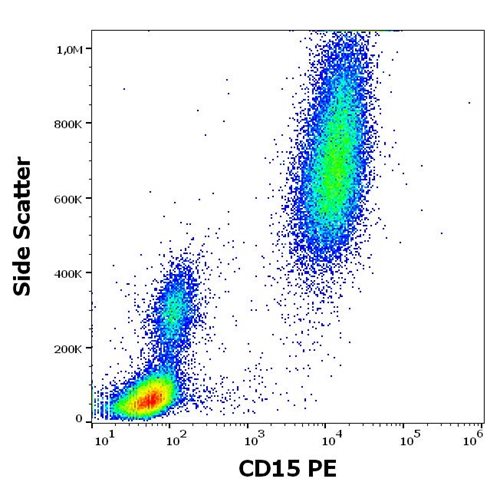CDC34 Recombinant Protein
Shipping Info:
For estimated delivery dates, please contact us at [email protected]
| Amount : | 20 µg |
| Purification : | Greater than 95.0% as determined by SDS-PAGE. |
| Content : | The CDC34 (1mg/ml) protein solution contains 20mM Tris-Hcl pH-8, 10% glycerol, 50mM NaCl and 1mM DTT. |
| Storage condition : | Store at 4°C if entire vial will be used within 2-4 weeks. Store, frozen at -20°C for longer periods of time. For long term storage it is recommended to add a carrier protein (0.1% HSA or BSA).Avoid multiple freeze-thaw cycles. |
| AA sequence : | MGSSHHHHHH SSGLVPRGSH MARPLVPSSQ KALLLELKGL QEEPVEGFRV TLVDEGDLYN WEVAIFGPPN TYYEGGYFKA RLKFPIDYPY SPPAFRFLTK MWHPNIYETG DVCISILHPP VDDPQSGELP SERWNPTQNV RTILLSVISL LNEPNTFSPA NVDASVMYRK WKESKGKDRE YTDIIRKQVL GTKVDAERDG VKVPTTLAEY CVKTKAPAPD EGSDLFYDDY YEDGEVEEEA DSCFGDDEDD SGTEES. |
| Alternative Name : | UB2R1, CDC-34, Ubiquitin-conjugating enzyme E2 R1, Ubiquitin-protein ligase R1, Ubiquitin-conjugating enzyme E2-32 kDa complementing, E2-CDC34, CDC34, EC 6.3.2.19, UBC3, UBE2R1. |
Source : Escherichia Coli. CDC34 Human Recombinant protein fused to a 20 amino acid N-terminal His-Tag produced in E.Coli is a single, non-glycosylated polypeptide chain containing 256 amino acids (1-236 a.a.) and having a molecular mass of 28.9 kDa. The CDC34 is purified by proprietary chromatographic techniques. CDC34 is important in the control of cell cycle and DNA replication. Cdc34 in association with different E3 complexes, including SCF, has been shown to target many different substrates for ubiquitination and degradation during cell division, signal transduction, and development. Cdc34 substrates that have been characterized include B-Myb, Wee1, MyoD, ICERII, ATF5, p27Xic1, and p27Kip1. Additionally, substrates such as catenin, p21Cip1, E2F, cyclin E, and cyclin D are putative substrates of Cdc34 by virtue of their SCF requirement for proteolysis. Cdc34 has been demonstrated to self-associate through a domain in the C-terminus, and is phosphorylated and ubiquitinylated in vivo. This protein is useful for in vitro ubiquitinylation reactions.
|
There are currently no product reviews
|


















.png)









